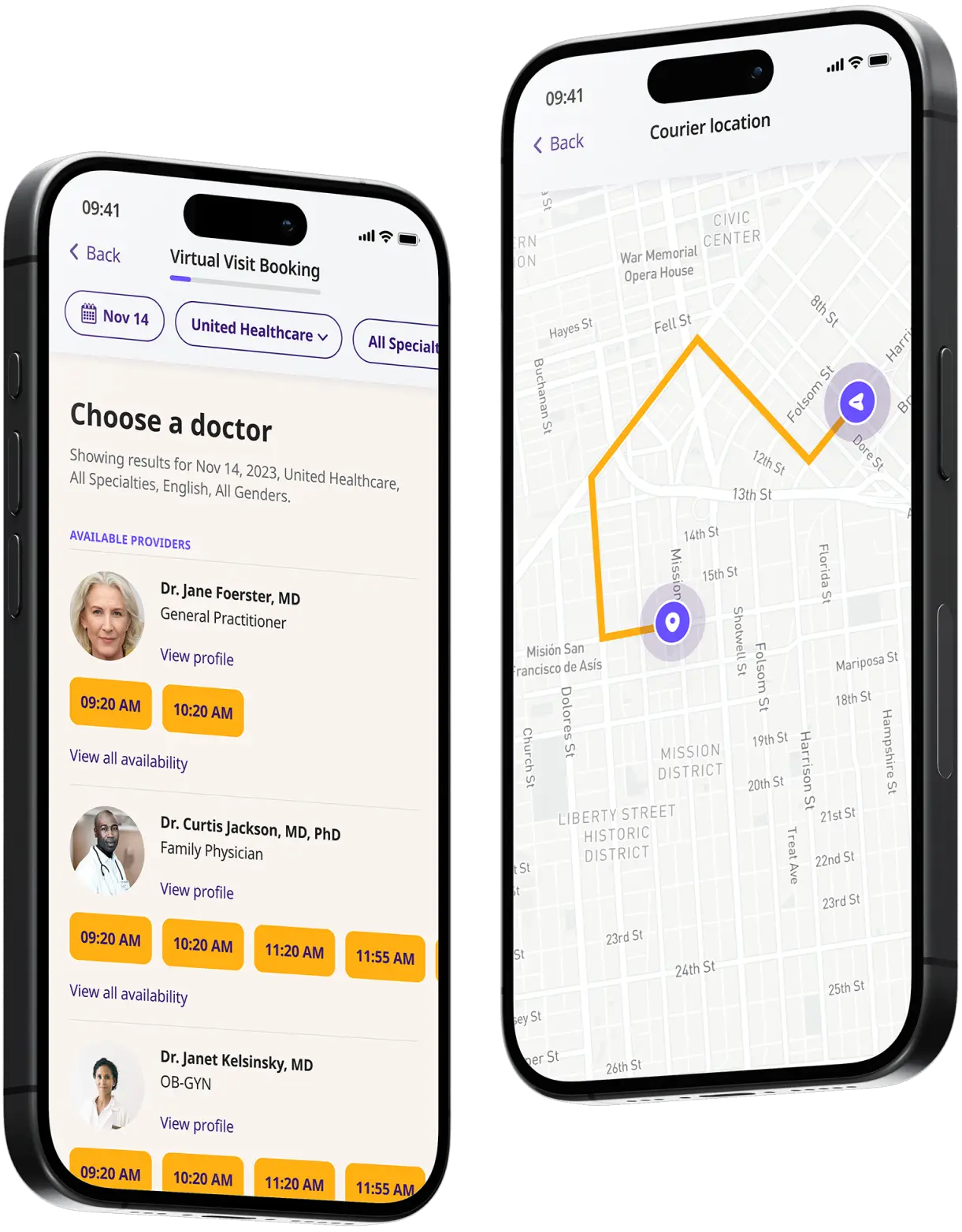Stye Treatment Online
Relieve stye symptoms like swelling and redness online. Consult a virtual doctor for quick diagnosis and effective treatment.
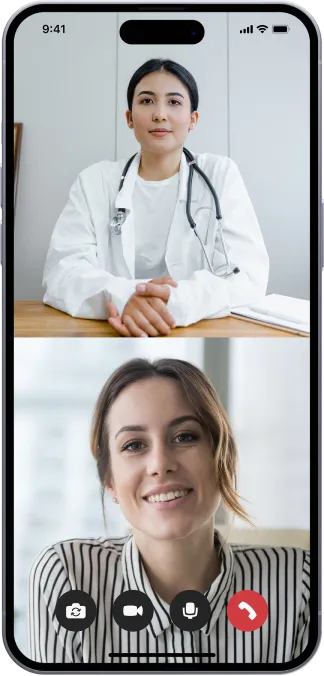
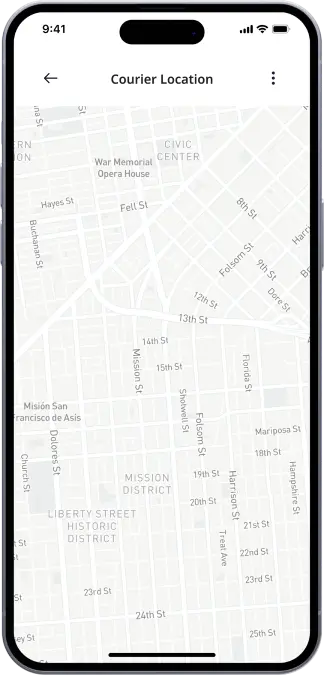
Available in 50 states. Insurance accepted.
Fast
virtual visits
24/7 care
assistants
Prescriptions
as needed

24/7 Personal Care
Consult with a physician in 15 minutes, refill an Rx or chat with our care assistants.

Affordable & Convenient
See your cost upfront and get treatment for hundreds of different conditions.

Insurance Accepted
We accept most major insurance plans, making healthcare easy and affordable.
See If Delivery Is Available Near You
Delivery Not Available
Enter your ZIP code to check if prescription delivery is available in your area and how soon your meds could arrive.
How to get started
Choose your doctor, start a virtual visit, and have your prescriptions sent to your preferred pharmacy for pickup — all in just a few easy steps.
Choose a doctor
Choose a physician by availability, specialty, ratings, and more.

Start your video visit
Connect with a doctor in minutes on a secure video call.
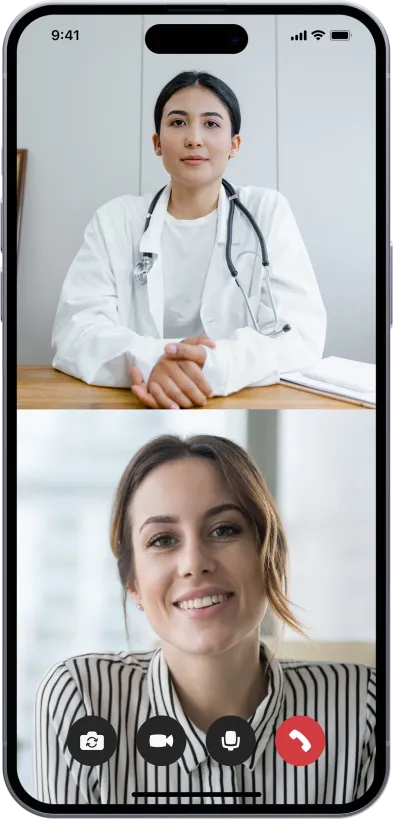
Get your prescription
Pick up your meds or have them delivered in as little as an hour.
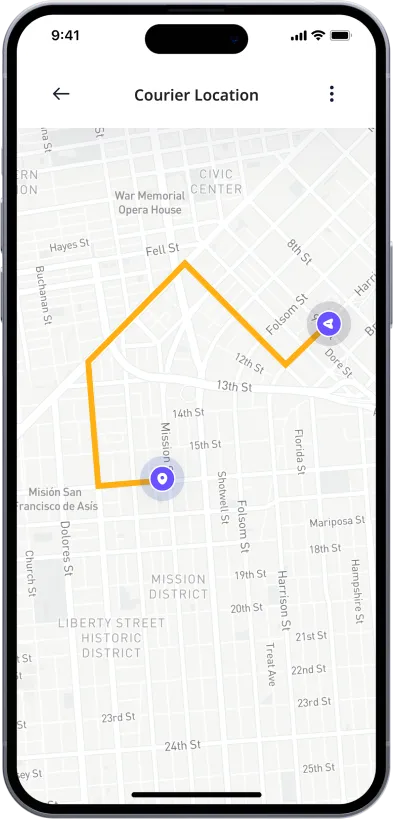
Available in 50 states. Insurance accepted.
One-Time
Physician Visit
One-time visit with a physician for diagnosis, treatment, Rx, labs, referrals, and doctor’s notes.
Accepted Insurances
See why people turn to DrHouse...
As seen in

Stye Treatment Online
A stye, also known as a hordeolum, is a common and typically harmless condition that affects many individuals. It appears as a red, swollen lump on the eyelid, often resembling a pimple.
Styes can occur at the base of an eyelash (external hordeolum) or deeper within the eyelid (internal hordeolum). This condition is primarily caused by a bacterial infection, typically involving the Staphylococcus bacteria, which infects the oil glands in the eyelid responsible for maintaining proper eye lubrication.
Styes are usually painful and may cause the eyelid to feel tender to the touch. While they can be uncomfortable and unsightly, styes generally do not cause damage to the eye or vision.
The condition often resolves on its own within a week or two. However, simple home remedies like warm compresses can help speed up the healing process by promoting drainage of the gland. In cases where a stye does not resolve on its own, or if complications occur, medical intervention might be necessary.
Symptoms of a Stye
The symptoms of a stye are usually quite noticeable and localized to the eyelid area. Here are the most common signs that you might be developing a stye:
- Swelling and redness: One of the first signs of a stye is localized swelling and redness on the eyelid. The affected area may also feel warm to the touch.
- Pain and tenderness: A stye can be quite painful, especially when touched or when blinking. The pain is usually sharp and localized.
- A pus-filled lump: As the stye develops, it may turn into a small, pus-filled lump on the eyelid. This lump can look similar to a pimple and is often centered at the base of an eyelash or under the eyelid.
- Tearing of the eye: The irritation from a stye can lead to increased tearing of the eye. This is a natural response to the irritation or infection.
- Sensitivity to light: Some individuals with a stye may experience sensitivity to light, also known as photophobia.
- Crusting around the eyelid: Discharge from a stye can dry, leading to crust formation around the eyelid margins, particularly noticeable upon waking up in the morning.
- A feeling of a foreign body: There may be a sensation of having something in the eye, often described as gritty or irritating.
What Causes Stye?
A stye is primarily caused by a bacterial infection in the oil glands or hair follicles of the eyelid. The most common culprit is the Staphylococcus bacteria. These bacteria are often present on the skin without causing any harm, but they can lead to an infection if they enter the glands or follicles.
This entry can occur through minor trauma to the eyelid, such as rubbing the eyes or using contaminated makeup or eye products.
The infection results in the blockage of the gland at the base of the eyelash or within the eyelid itself. This blockage traps bacteria and oils, leading to inflammation and the characteristic swollen, red bump of a stye.
In some cases, styes may also be linked to other eyelid issues, such as blepharitis, which is an inflammation of the eyelids themselves, or other skin conditions that affect oil production and health.
Risk Factors
Several factors can increase the likelihood of developing a stye such as:
- Poor hygiene: Not washing hands frequently, especially before touching your eyes, can transfer bacteria to the eyelids, leading to stye formation.
- Use of old or contaminated makeup: Eye makeup that is expired or not properly cleaned can harbor bacteria and cause infections.
- Chronic eyelid inflammation (blepharitis): Individuals with ongoing eyelid inflammation are more prone to developing styes due to persistent irritation and potential for bacterial overgrowth.
- Stress and hormonal changes: These can affect the body’s immune response and hormonal balance, making the oil glands more susceptible to infection.
- Pre-existing skin conditions: Conditions like acne or rosacea, which affect the skin’s oil glands, can also increase stye risk.
- Contact lens wearers: Poor contact lens hygiene, such as not properly cleaning or replacing lenses, can increase the risk of eye infections and subsequently styes.
- Frequent eye rubbing: This can introduce bacteria to the sensitive areas around the glands and follicles of the eyelids.
Treatment of Stye
The treatment of a stye focuses on alleviating symptoms, promoting healing, and preventing further infection.
Most styes resolve on their own within a week or two, but several treatments can help speed this process and reduce discomfort:
- Warm compresses: The most recommended and effective treatment for a stye is applying warm compresses. Soak a clean cloth in warm water, wring it out, and gently place it on the affected eyelid for 10-15 minutes, several times a day. The warmth helps to dissolve the pus and oils inside the gland, allowing the stye to drain naturally.
- Eyelid hygiene: Keeping the eyelid clean and free from crusts can prevent further infection. Use a mild, non-irritating soap or special eyelid cleansing pads to gently clean the area.
- Massage: After applying a warm compress, you can gently massage the area around the stye to encourage drainage. Be careful not to press the stye directly, which can cause further irritation.
- Avoid makeup and contact lenses: While you have a stye, avoid wearing eye makeup and contact lenses. These can irritate the eye and potentially spread the infection.
- Medications: Over-the-counter pain relievers like ibuprofen can help manage pain and reduce swelling. For severe or persistent styes, a doctor may prescribe antibiotic ointments or oral antibiotics.
- Medical procedures: In cases where a stye does not respond to home treatments, a healthcare provider might need to perform a minor procedure to drain the stye.
Stye Medication
Medications play a crucial role in managing and treating styes, especially when simple home remedies are not sufficient:
- Antibiotic ointments: Topical antibiotics are commonly prescribed to treat or prevent infection in the affected eyelid. These ointments are applied directly to the eyelid margin near the stye.
- Oral antibiotics: For more severe cases or for styes that do not respond to topical treatment, oral antibiotics may be necessary. These medications can help treat underlying infections that might be contributing to the stye or prevent complications.
- Steroid injections: In rare cases, a corticosteroid injection may be given to reduce inflammation and swelling around severe styes.
- Over-the-counter pain relievers: Medications such as acetaminophen or ibuprofen can be used to alleviate pain and reduce inflammation associated with styes.
Prevention
Preventing styes primarily involves maintaining good eyelid hygiene and taking steps to minimize the risk of infection.
Here are some effective strategies to help prevent the development of styes:
- Maintain good hygiene: Regularly wash your hands with soap and water, especially before touching your eyes or face. This simple step can significantly reduce the transmission of bacteria that can lead to styes.
- Avoid eye rubbing: Try to avoid rubbing your eyes, which can transfer bacteria from your hands to your eyelids. If you must touch your eyes, make sure your hands are clean.
- Proper makeup usage: Always use clean makeup applicators and avoid sharing makeup with others. Replace eye makeup every 3-6 months to minimize the risk of bacterial growth. Remove all makeup before going to bed to prevent any residue from clogging the oil glands around your eyelids.
- Care for contact lenses: If you wear contact lenses, follow all guidelines for cleaning, disinfecting, and replacing them as recommended. Never sleep in contact lenses unless they are specifically designed for overnight wear.
- Manage skin conditions: If you have skin conditions such as acne or rosacea that affect your eyelids, managing these conditions can help reduce the risk of developing styes. Consult with a dermatologist for appropriate treatments.
- Nutritional support: Maintaining a diet rich in vitamins A, D, and omega-3 fatty acids can support skin and eye health. These nutrients help maintain the integrity of the skin and the proper functioning of the oil glands.
How Can DrHouse Help?
DrHouse offers a convenient and effective way to address and treat styes through its telehealth services. Here’s how DrHouse can assist you in managing and treating styes from the comfort of your own home:
- Online consultations: DrHouse provides access to healthcare professionals via online consultations, allowing you to discuss your symptoms and receive a diagnosis without the need for an in-person visit.
- Personalized treatment plans: Based on your symptoms and medical history, a healthcare provider can create a personalized treatment plan. This plan may include recommendations for over-the-counter treatments, prescriptions for medications, or advice on home remedies like warm compresses.
- Prescription services: If your stye requires medication, such as antibiotic ointments or oral antibiotics, DrHouse can facilitate prescriptions directly through its platform. These prescriptions can be filled at your local pharmacy, ensuring you receive your medication promptly.
- Follow-up care: DrHouse allows for easy follow-up appointments to monitor your condition and adjust your treatment plan if necessary. This ongoing care is crucial for ensuring the stye resolves completely and to prevent recurrence.
- Accessibility and convenience: The services offered by DrHouse are designed for ease of use and accessibility, ensuring that you can access healthcare services anytime and from anywhere, which is especially useful for urgent but non-life-threatening conditions like styes.
Through these comprehensive telehealth services, DrHouse makes it easier to manage eye health issues such as styes, providing expert care with convenience and efficiency.
Frequently Asked Questions (FAQs)
Can Stye Be Treated Online?
Yes, styes can be effectively managed and treated through online consultations with a healthcare provider. DrHouse offers telehealth services that allow you to receive personalized treatment plans, prescriptions, and follow-up care for styes.
Can I Get Antibiotics for Stye Online Through DrHouse?
Yes, the doctors at DrHouse can prescribe antibiotics for styes through their telehealth platform. They can also provide guidance on proper usage and precautions to take while using these medications.
Frequently asked questions



